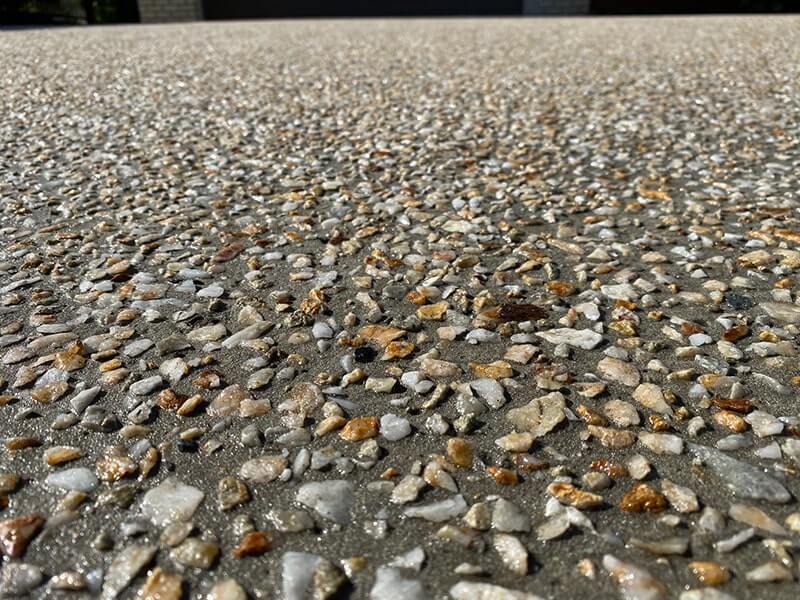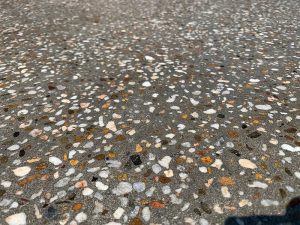What Is Exposed Aggregate?
Exposed aggregate concrete is a type of decorative paving for your driveway, sidewalk or patio and other outdoor spaces. This style utilizes a concrete base with an exposed top layer. This top layer can be your desired mix of sand, cement and decorative elements like stones, pebbles, granite or gravel. This can be the versatile choice rather than dull and plain concrete. You can choose from a wide variety of textures and sizes. With this type of paving, you can match your exterior to the general look of your home.
According to concreters, exposed aggregate is easier and cheaper to lay compared to other forms of paving like asphalt or concrete slab.
How Durable Is Exposed Aggregate?
One of the benefits of using exposed aggregate concrete over other types of paving is durability. A well laid exposed aggregate holds well under any traffic. In fact, exposed aggregate is the preferred method of paving for high traffic spaces in historical sites around the world. This type of finish can last for decades without requiring any major maintenance work or cleaning. Exposed aggregate is perfect against extreme weather. This surface holds up against the freezing cold just as well as in summer with direct sunlight and high temperatures.
How Is It Laid Out?
To better understand why you should consider exposed aggregate concrete, take a look at the process of how this paving is done.
First decide on your preferred mix of cement, sand and aggregates. Consult professional concreters to do this correctly. These three elements must be mixed proportionately depending on your needs. Standard aggregate is the most common type of aggregate finish. If you decide on a standard aggregate finish, the materials will be mixed based on the desired ratio.
This whole mix will be poured on the surface being worked on. After that, the surface must be leveled off to achieve a uniform finish.
Next step involves “bull floating” to get rid of exposed edges and other imperfections.
The laid concrete mix will be left alone to partially set. Then surface retarder is applied. Its purpose is let the concrete mix underneath continue to dry while the surface stays relatively wet and removable. Before it completely dries, this is the time to set other elements.
The last, and probably the most exciting step, is to hose off the surface to expose the internal aggregate mix.
Aside from standard aggregate, you can choose other methods like seeded aggregate or polished aggregate.
 Seeded Aggregate
Seeded Aggregate
In seeded aggregate, the aggregate mix is poured on top of a wet cement and sand base. This might sound easy, but this finish is the hardest to execute. Deal only with experienced concreters with the skill and the artistic eye to do this type of aggregate.
Seeded aggregate can be your choice if:
- You have a design and colour in mind for the gaps.
- Choose the aggregate to match with walls and other existing features.
- Use the correct brightness or texture for the site. Example, pool sides need finer texture for people to safely walk barefoot on.

Polished Aggregate
As the name implies, this type of aggregate involves polishing with sanders and other smoothening equipment. This is the preferred aggregate type for indoor spaces like garage floors.
What are my aggregate options?
Depending on your style and budget, you can choose from a wide variety of aggregates.
Here are the most common types:
- Granite aggregate– This is one of the most common type and usually comes in various colours like gray, white, red, even pink
- Gravel or ballast aggregate– These are usually harvested from natural river beds, sea beds or sourced from quarries.
Exposed aggregate concrete probably offers the most perks above other forms of finishes available. It can provide an elegant but durable finish for your surfaces. Talk to our expert concreters to know more.
